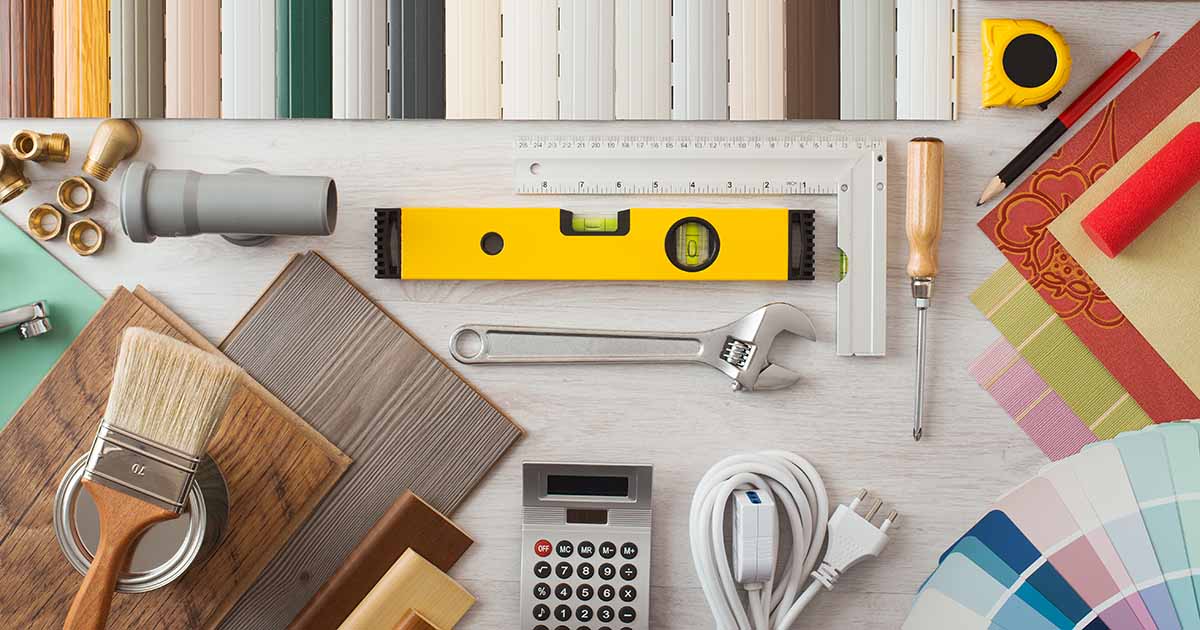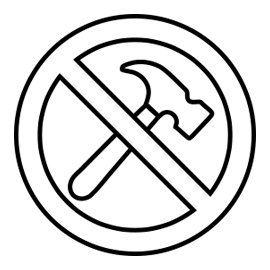DIY Tips Worth Passing On: Simple Skills to Try at Home

A Call to Help The Lost DIY Generation
In a world where convenience often wins, traditional DIY skills are fading fast, especially among younger generations. From changing a tap washer to fixing a broken drawer, many of us are missing the practical know-how that previous generations took for granted.
At HIPPO, we believe it's time to bring those skills back. Whether you're learning from scratch or brushing up on old habits, these easy-to-follow DIY ideas will help you feel more confident tackling everyday home maintenance jobs, with a few sustainable touches thrown in.
The Lost DIY Generation in Numbers

1 in 5 Brits admit to feeling stressed and anxious about doing DIY without the support of other people

1 in 4 Brits wish more people around them would pass on their DIY skills

58% of Brits aged under 24 believe their generation is losing the skill of DIY
3 Simple DIY Skills You Can Learn at Home
These practical projects are a great starting point if you’re new to DIY or want to build your confidence with basic tools and techniques.

Mastering the Basics - How to Unblock a Sink
You've tried your best, but the sink still won't drain after plunging it or even using a supermarket-bought unblocking liquid (which is not always recommended due to the potential for pipe damage), despite your efforts.
Unblocking a sink by dismantling the U-bend might seem daunting, but it’s a straightforward task with the right approach.
Here's a step-by-step guide:
Planning and Preparation
Remove clutter and ensure you have space to work. Wear rubber gloves for this job!
Place a towel under a bucket beneath the piping to catch the water that has filled the sink
Releasing water from a fully blocked sink can be messy! Try and remove as much water from the blocked sink before you get to work and attempt to open the U-bend.
Unscrew and remove the U-bend and any attachments such as the dishwasher/washing machine pipe
Turn off these appliances at their power source before doing so. Using a suitably sized pipe cleaner and some disinfectant, clean the piping, removing any visible blockages such as old food waste, hair or gunk!
Once this is complete, gently run the tap
Make sure the bucket is in place, catching the clean water through the plug hole and fixed piping that is immovable.
Once all pipes are clear
Reattach them in position and ensure the visible compression joints are tight and nicely secure.
To test the flow of water, put the plug back in the sink
Fill the sink halfway and then remove the plug. This pressure test will also demonstrate whether you’ve reattached and secured the compression joints tightly enough, as you don’t want any leakages.
Works for the bathroom or kitchen sink
This method applies to both bathroom and kitchen sinks, where the piping is easily accessible.
If the sink persists in blocking, you may have a deeper drain blockage
At this point will need to call in a professional, registered plumber. Remember, as with any household or DIY task, health and safety are paramount, and you must assess each scenario based on the tools you have, the skills and experience you have and if in doubt, always defer to professional advice.

The Art of Upcycling
Upcycling is a creative, sustainable way to give old furniture a new lease of life.
Here’s how to start with something like an old chest of drawers:
Take an old wooden chest of drawers, for example
Important initial steps are removing all of the drawers, taking off the handles and giving everything a good clean with sugar soap where required.
Then you can sand it down
Depending on the age, material or condition, you will need different grits of sandpaper.
You then have a few choices for the aesthetics
You could either varnish all over, if the item is made of natural wood, to bring out the unique wood grain, or prime, undercoat and then paint. For other materials such as veneered pieces, carry out a light sanding using 120 grit sandpaper and then undercoat using the appropriate paint, ready for your topcoat.
Problem-solving is a huge part of DIY
But nothing beats just getting stuck in and having a go. The more you give it a go, the more confidence you will have for future upcycling projects, small or large.

Make Do and Mend
One of the most valuable lessons in DIY is learning to repair before replacing. It's a mindset that not only saves money but also reduces waste and builds confidence in your ability to solve everyday problems.
Whether it’s a chair with a loose leg, a drawer that won’t close properly or a garden gate coming off its hinges, giving things a second life is both satisfying and sustainable.
This approach is also a great way to pass skills through generations. Children who grow up watching someone fix what’s broken are far more likely to try it themselves. It doesn’t need to be perfect — just the act of having a go can be enough to spark lifelong DIY confidence.
Think creatively. A broken wardrobe can become shelving. Old doors can be repurposed into bookcases. Sometimes it just takes a fresh perspective - and a screwdriver - to give something a new lease of life.
And when an item really can’t be saved, it doesn’t have to go to a landfill. That’s where HIPPOBAGs come in. Keep one handy for those times when broken furniture, damaged materials or general DIY waste need to be cleared responsibly. With over 95% of waste we collect diverted from landfill, it’s a smarter way to deal with whatever can’t be repaired.
At HIPPO, we have a range of DIY waste disposal services for small or large DIY tasks you may want to tackle. Alternatively, you can give us a call to discuss your requirements on 0333 999 0 999.

